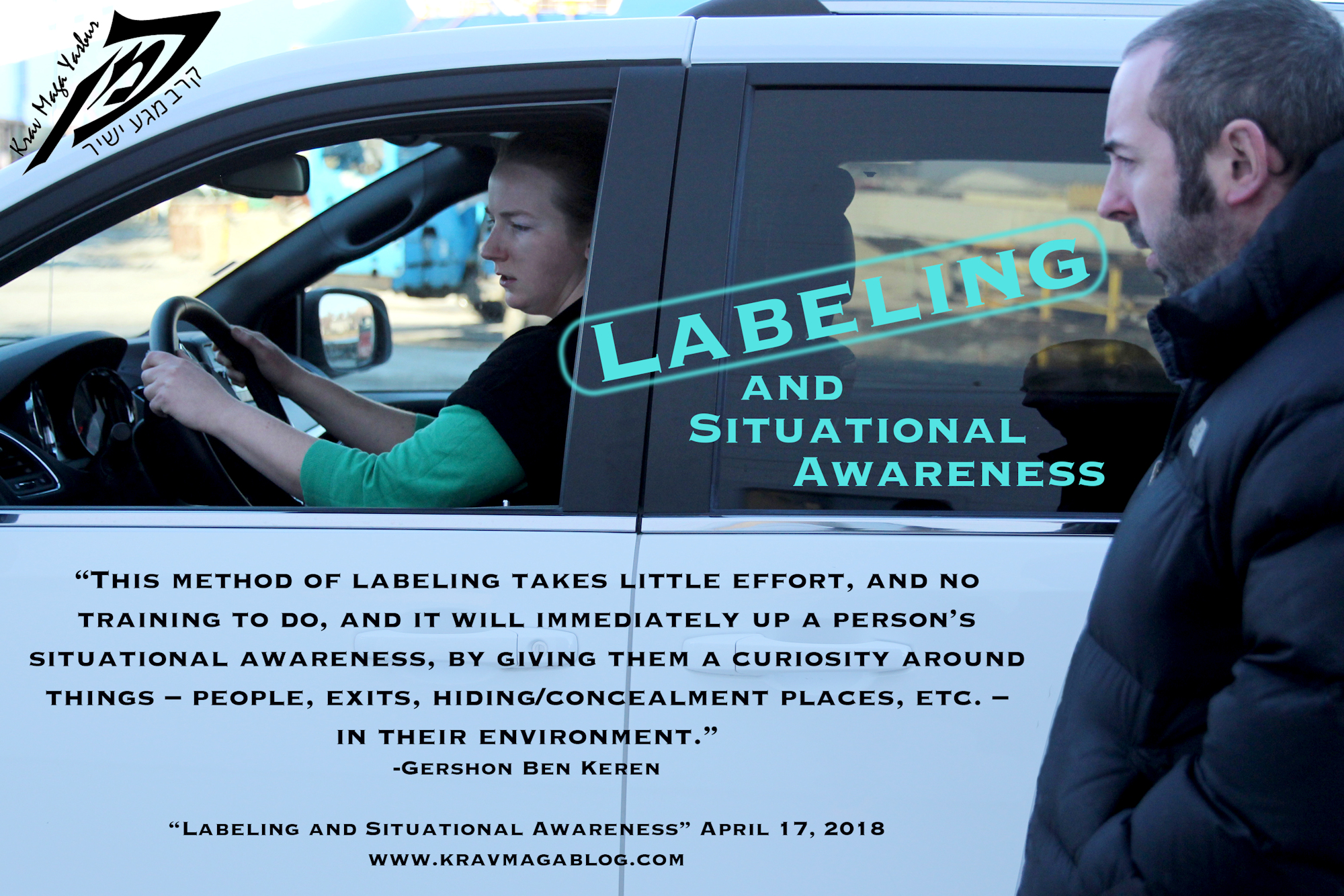Author: Gershon Ben Keren

There are many definitions of what situational awareness is, but if we were to boil it right down, it would basically involve, knowing what is going on around you – and from a self-protection perspective, if any of it involves potential or actual harm/danger. Most people lack good situational awareness, because they lack an interest and a curiosity, about their surroundings and the people in their environment. This was true, even before the mobile phone began to compete for our attention e.g. people would get lost in our own thoughts, daydream, and space out, etc. As society became safer, and we didn’t have to actively reserve bandwidth for identifying danger, so our awareness began to lower. Human Beings are the laziest creatures on the planet. We are quick to adapt, and to develop ways of doing things, which require the least amount of effort e.g. if experience has taught us that every time we walk on a crowded street, nothing has happened to us, then it is likely that any effort we may have once put to identifying danger will be reduced. It is also worth noting that previous generations educate the next: if our guardians/parents lacked awareness, we probably assumed as children that we didn’t need to be aware either. Unfortunately, a lack of awareness is a vulnerability, that a threat can exploit, and so increases our risk of being targeted and victimized. To get this back, and/or increase our level of awareness, we need to develop our curiosity.
One way to do this is through labeling. This is a means by which we can manage the objects and persons in our environment, and our relationship with them. You may have had the experience, where you think you keep seeing the same person in different places, but can’t be sure. This could be an important piece of information: if it is the same person, they may be following you, etc. However, if it isn’t, it may not warrant your interest and time and may distract your attention away from something that is a threat/danger. When things first attract your attention, label them e.g. tall man in a green coat, Deep Blue car, etc. These labels allow you to manage and place them in your thoughts. If you see the tall man or the car again, you have already registered them, and so you will be able to reference them back. The label is a term on which you can hang all their previous actions and behaviors e.g. tall man in a green coat, scanning the street, Deep Blue car driving slowly, etc. The label/name we give allows us to make and remember these associations. Anyone or anything that evokes our curiosity, we should give a label to. By doing this, it becomes difficult to deny or discount danger. If the tall man in the green coat starts to walk towards us, or the Deep Blue car pulls up next to us, then we need to be preparing ourselves – or potentially exiting/leaving our environment. Because we have labeled them, we have an interest in them, and this prevents us from ignoring their actions and behaviors.
Obviously, a man in a green coat, can change it or turn it inside out, etc., to help avoid detection, however this type of action is only going to be undertaken by someone who is carrying out some form of planned and detailed surveillance of you, and for most of us, this isn’t a likely occurrence. If the green coat is what makes the individual notable to you, that should be your label, rather than searching for something which they’re less likely to easily change in a moment, such as their shoes, but which aren’t as recognizable to you. If the person you are labeling looks like someone you know, or a celebrity, you could label them as so-and-so look-alike, etc. Anything which makes them memorable to you in that moment should be used. Once you have given the label, you don’t necessarily have to hold it in your head, trying to remember it. If the person isn’t acting strangely, or in a way that gives you concern, you can move on and identify and label somebody or something else, in your environment. If their movement, or another action they make, draws your attention back to them, this will act as the recall for the label, which will in turn enable you to recall the original actions and behaviors, which first drew your attention to them, such as them target-glancing you, and/or scanning their environment, etc.
You can go through the same process, with your physical environment. When I’m in restaurants, I label my exits e.g. main exit, kitchen exit, patio exit etc. This may seem paranoid, but if a threat or danger blocks one, I have a named escape route elsewhere. In a rapidly developing situation, that requires disengagement, having already decided upon your route speeds things up considerably. Perhaps one of the most important survival skills we have is decisiveness, and knowing how you are going to disengage in a dangerous situation, avoids hesitancy. Having assigned a label, means a quicker recall of the exit, and this can make all the difference.
This method of labeling takes little effort, and no training to do, and it will immediately up a person’s situational awareness, by giving them a curiosity around things – people, exits, hiding/concealment places, etc. – in their environment. Like all methods that aim to improve situational awareness, it needs to be trained, until it becomes a habit. For this to work, the distractions must be let go, and we must be engaged with our environment. We should be much more curious about the physical world, when we are out and about in it. Such curiosity is something that is developed over time, and labeling expedites this process, making us more effective at managing and keeping track of those things around us.